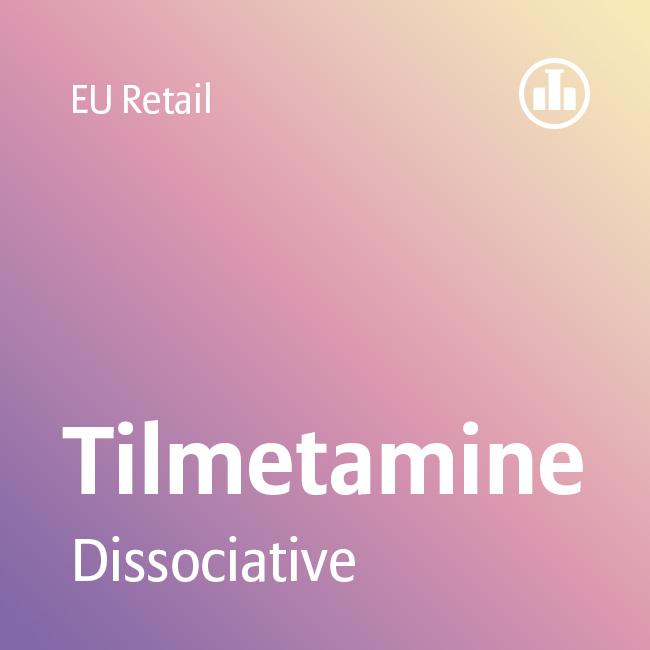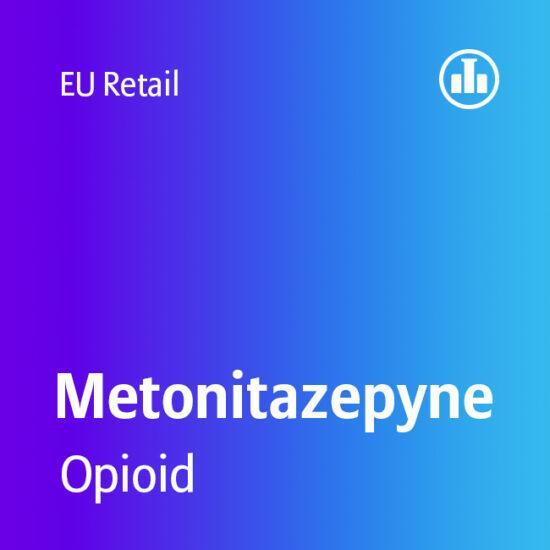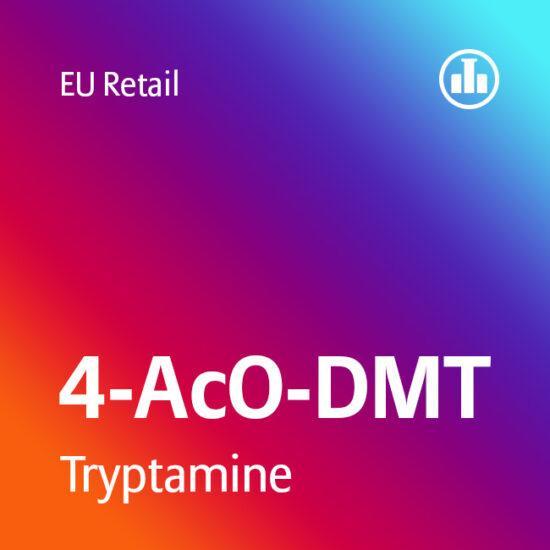Tilmetamine, with the IUPAC name 2-(methylamino)-2-(thiophen-2-yl)cyclohexan-1-one, is a dissociative anesthetic that is chemically related to ketamine. Its molecular formula is C11H15NOS, and its molecular weight is 209.31 g/mol. It shares structural similarities with other NMDA (N-methyl-D-aspartate) receptor antagonists, such as ketamine and phencyclidine (PCP). Tilmetamine typically exists as odorless white crystals when in its hydrochloride salt form.
The compound is primarily used in veterinary anesthesia, where it is combined with other agents such as zolazepam to produce the commercially available combination known as Telazol. However, it has also garnered attention in research environments due to its unique pharmacological properties, including its dissociative and anesthetic effects. Tilmetamine is highly soluble in water, making it ideal for parenteral administration, and is stable under typical storage conditions, although it should be kept away from moisture to prevent degradation.
Mechanism of Action: Tilmetamine acts primarily as an NMDA receptor antagonist. NMDA receptors are glutamate receptors in the central nervous system, which play a key role in synaptic plasticity, memory function, and excitatory neurotransmission. By inhibiting these receptors, tilmetamine effectively disrupts the transmission of excitatory signals, leading to a dissociative state characterized by analgesia, amnesia, and anesthesia.
Beyond NMDA receptor antagonism, tilmetamine also has minor effects on opioid receptors, dopamine reuptake, and nicotinic acetylcholine receptors, contributing to its wide array of psychoactive effects. The dissociative properties of tilmetamine are believed to arise from its ability to decouple sensory input from conscious awareness, giving rise to the out-of-body experiences commonly associated with dissociative anesthetics.
Pharmacokinetics and Dosage: Tilmetamine is most commonly administered via intravenous or intramuscular injection. When used in veterinary practice, it is dosed in combination with zolazepam at concentrations of around 3–5 mg/kg for surgical anesthesia. Research studies typically follow similar dosing regimens, depending on the specific model organism.
Tilmetamine’s onset of action is rapid, with effects typically observed within 1–2 minutes following intravenous administration or 5–10 minutes following intramuscular injection. The duration of the dissociative state can last from 20 minutes to an hour, depending on the dose and route of administration, after which residual sedative effects may linger for several hours.
The compound undergoes hepatic metabolism, primarily via hydroxylation and demethylation, and is excreted by the kidneys. The half-life of tilmetamine varies based on species but is generally in the range of 1–2 hours in humans and other mammals.
Effects and Behavioral Observations: Tilmetamine produces a range of effects, largely dependent on the dose administered. At low doses, its effects are characterized by sensory detachment, mild euphoria, and distortions in perception of time and space. Higher doses result in profound dissociation, anesthesia, and analgesia, often accompanied by vivid hallucinations and out-of-body experiences.
Animal studies have demonstrated that tilmetamine induces significant rewarding and reinforcing effects, similar to those observed with other NMDA antagonists like ketamine. These effects are thought to arise from tilmetamine’s interactions with the brain’s reward circuitry, particularly its impact on dopamine pathways.
In research settings, tilmetamine is frequently used to model dissociative states, anesthesia, and certain psychiatric conditions such as schizophrenia. Its psychotomimetic properties have made it a useful tool in neuropharmacology for understanding the role of NMDA receptors in cognition, memory, and sensory processing.
Potential Side Effects: Like other dissociative anesthetics, tilmetamine is not without risks. Common side effects include:
- Cardiovascular Effects: Increased heart rate and blood pressure are frequently observed following administration, likely due to the release of catecholamines. In most cases, these effects are transient, but they may pose risks for individuals with pre-existing cardiovascular conditions.
- Psychological Effects: Hallucinations, anxiety, confusion, and agitation can occur, particularly at higher doses. These effects may persist after the drug’s anesthetic action has worn off, leading to a state known as “emergence delirium.” Although generally short-lived, this delirium can be distressing.
- Respiratory Depression: Tilmetamine, particularly when administered in high doses or in combination with other central nervous system depressants, can lead to respiratory depression. This can be especially dangerous without proper monitoring during anesthesia.
- Neurological Effects: While tilmetamine is typically used in controlled, clinical, or research settings, prolonged or excessive use of NMDA antagonists has been associated with neurotoxicity in some animal models, a phenomenon known as “Olney’s lesions.” The relevance of these findings to human use remains controversial, but the potential for long-term neurological damage warrants further investigation.
Harm Reduction Guidelines: For individuals working with tilmetamine in a research setting, certain harm reduction measures should be observed to minimize risks:
- Proper Dosing: Always ensure the correct dose is used, based on the organism and intended effects. Avoid using excessively high doses to reduce the risk of serious side effects like respiratory depression.
- Monitoring: Continuous monitoring of cardiovascular and respiratory function is essential during the administration of tilmetamine, especially when used as an anesthetic. Oxygen supplementation and resuscitation equipment should be readily available in case of adverse events.
- Psychological Support: Due to the risk of hallucinations and emergence delirium, it may be beneficial to provide a calm, supportive environment for subjects recovering from the drug’s effects. Ensuring the presence of trained personnel can help mitigate any psychological distress that may occur.
- Storage and Handling: Tilmetamine should be stored in a cool, dry place, away from light and moisture to maintain its stability. It is essential to adhere to all legal and ethical guidelines regarding the use of controlled substances in research.
Conclusion: Tilmetamine is a potent dissociative anesthetic with a well-documented pharmacological profile. Its primary action as an NMDA receptor antagonist makes it a valuable tool in research, particularly in the study of anesthesia, dissociative states, and certain psychiatric conditions. However, the potential for side effects, including cardiovascular stimulation, psychological distress, and respiratory depression, underscores the importance of proper handling, dosing, and monitoring.
While tilmetamine shows promise in clinical and research settings, more studies are needed to fully elucidate its long-term effects, particularly regarding its neurotoxicity and reinforcing properties. As with all substances of this nature, tilmetamine should be used responsibly and only in environments where proper safety protocols are in place.
Why Buy Tilmetamine from RECHEMCO?
★ We have a long trading history in the market so you benefit from our experience.
★ Tilmetamine was tested and verified.
★ We accept various payment methods such as Bitcoin, Monero and bank wire.
What you will receive when you buy Tilmetamine from RECHEMCO?
• One sealed aluminum foil bag containing highest grade Tilmetamine
• white crystals
• 98-99% Purity






Reviews
There are no reviews yet.